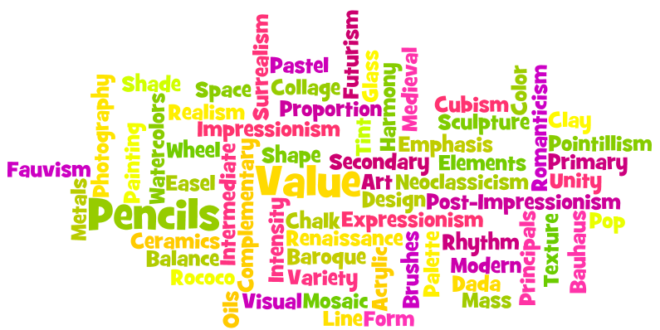Most reputable schools in China allow their students to learn about art. Teachers can teach art and help students learn the various aspects of art to understand, describe and appreciate art. Teachers ensure that students learn to familiarize themselves and understand the various art concepts and proper art vocabulary. Understanding art vocabulary is fundamental to grasping various themes, concepts, emotions and ideas portrayed in art pieces. It enables learners to develop, connect, and show artistic emotions through various arts professionally. Art vocabulary is vital in communication since it allows students to develop and maximize their creative potential.
Art Vocabularies to Teach Chinese Students
· Texture
One of the vocabularies to teach Chinese students is texture, which refers to the surface quality depending on the type of artwork. For instance, the art type might be physical, where you experience it through touch, sight or emotion and relate it to an experience. When learning the various art vocabularies, students need to understand how to relate experiences in the world with artistic texture in the artwork.
· Shape
The shape is another vocabulary in artwork that refers to a two-dimensional form bounded by width and length. One can define the shape with other artistic elements like lines, colours and texture. Shape provides a natural and geometric perspective that helps to enhance various representations. While defining shape, it’s vital to remember that shapes come with distinct dimensions, including 2D and 3D.
· Value
Value in art refers to the darkness or lightness of a colour expressed in an artwork. It can sometimes change with shade because it’s a visual scale from light to dark. Value is an essential art vocabulary introduced by expats teaching in China since it creates boundaries, depth, and texture. An image’s tonal variance, which describes the difference between the lightest and darkest shades, plays a vital role in enhancing artwork quality.
· Colour
Colour is an art vocabulary used to teach Chinese students, referring to an object’s contrast or saturation. Colours are categorized into primary, secondary and tertiary levels. Primary colours are yellow, red and blue, while secondary colours are made by mixing two primary colours: green, purple and orange. Tertiary colours are created by combining secondary and primary colours, including amber colours. Artists use these colours to highlight a particular emotion that corresponds with their message. For instance, colours that represent nature include green and blue colours.
· Subject matter
The subject matter is the image, topic or focus that mainly answers the questions in an artistic piece. Subject matter representations in an art piece may take still life, portraiture, abstract or landscape forms. An artist may use different concepts to represent their subject matter based on the kind of emotion they wish to present. The subject matter is at the front line of the artwork and is supported by the background to create or send a specific message.
Importance of Art Vocabulary
Art vocabulary is essential in helping students understand and interpret the message portrayed in art. Expats teaching English in China strive to ensure students understand the various art vocabularies and English terminologies while applying them in class. Applying these terminologies and vocabularies helps learners to engage in productive artistic conversations with their peers.
China is popularly known for its excellent performance in all art forms and is highly regarded as an artistic country. The performing arts have an important and unique place in Chinese history. Current-day Chinese art, including singing, Peking Opera and acting, have evolved and developed. However, they maintain their central roots of folk culture while adding a modern touch, such as new techniques and instruments. Understanding the value of artwork is vital since it helps link thoughts, concepts and emotions in an artistic perspective for your audience to enjoy.
 HammBurg Be informed with latest news, reviews, entertainment, lifestyle tips, and much more.
HammBurg Be informed with latest news, reviews, entertainment, lifestyle tips, and much more.




